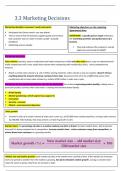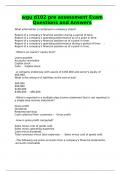Summary
Summary AQA AS/ A - level 3.3 marketing decisions revision notes
Revision notes organised neatly to allow for effective revision. No need to create your own notes, these are set out clearly and allows for a*. COVERS CONTENT FOR 3.3
[Show more]





